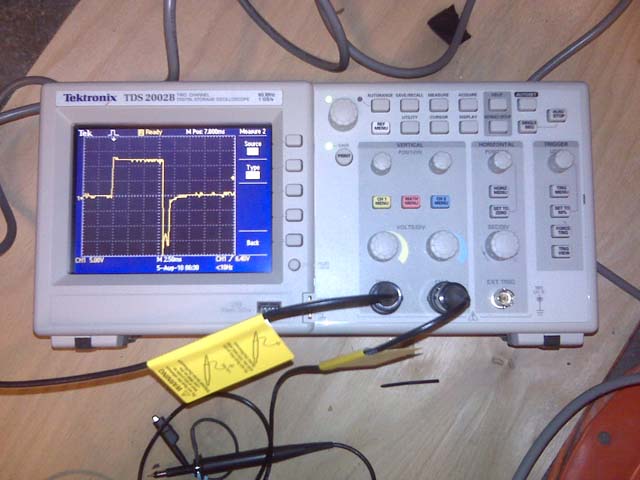satariel666
Well-Known Member
My previous post isn't meant to put the kabash on COP's. But rather it's meant to stake out a starting place in my mind. As far as I'm concerned I'm just cranking up my problem solving mode.
This is what an OEM ignition waveform looks like on an oscilloscope:

The scope tells me the following:
The OEM coil is charged for 8 milliseconds (0.008 seconds) with 12 volts. At the very end of the 8 millisecond period the plug is fired and the spark lasts for around 1 millisecond. The peak reverse voltage (PRV or PIV)) seen by the OEM TCI module is around -15 to -20 volts.
When I get my loaner cops I'll again do this test while using various resistors and determine what resistor best reproduces the same load on the OEM TCI module as we don't want to stress it out. I'll also adjust the resistor to limit the energy to the cop to its normal maximums. I have no idea (other than in my previous post) as to how this will come out.
One last thought: There are likely some efficiency losses when using a separate ignition coil and spark plug wire but not a lot. Manufacturers went to using cops because it's cheaper and easier for them. Then, given that the traditional coil/plug setup is about the same efficiency as the cop solution then the one difference glaring difference is the size of the coils and their close proximity to engine heat. The cops is a lot smaller and therefore will not be able to transfer as much energy as a large external coil; and, because of the heat, it will not be able to be driven as hard as an external coil.
That said, I'm hoping for a good surprise when I begin my testing with the cops. I hope that I'm underestimating their performance. I want them to work! We know that others are using them and have quite a few miles on them at this point. That is a great sign that either the calculations are pessimistic or that the OEM TCI module is more robust than expected.
Nice gear, I have similar at work but honestly I never felt a need to test my coils like that.
Id like to see the results but I still dont get the idea WHAT FOR?































![Bovemanx Motorcycle Phone Mount Holder, [150mph Wind Anti-Shake][7.2inch Big Phone Friendly] Bike Phone Holder, Motorcycle Handlebar Cell Phone Clamp, Compatible with iPhone 16 Pro Max Smartphones](https://m.media-amazon.com/images/I/51F+1sontPL._SL500_.jpg)


